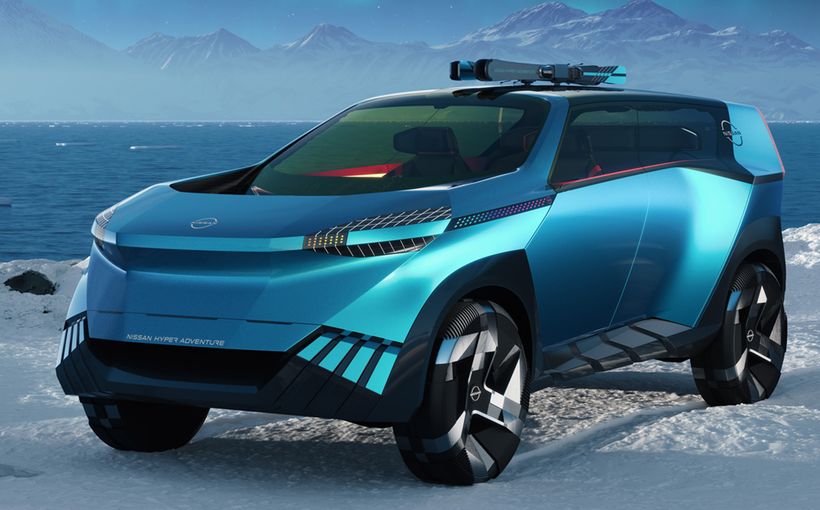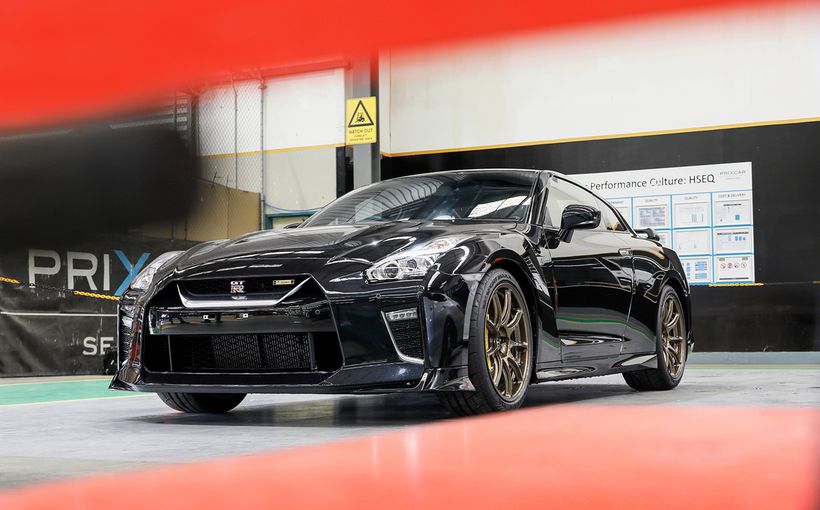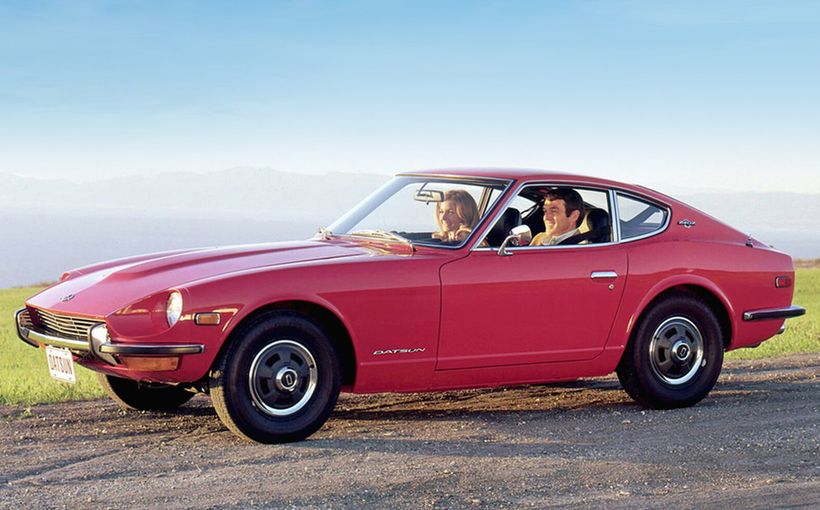Datsun 180B SSS: Nissan’s outstanding 1970s rally ‘Carr’

Nissan, through its export brand Datsun, boasts a rich history of international and Australian rallying success in the 1970s including such iconic models as the 1600, 240Z-260Z and Stanza. However, there was another model - the 180B SSS - which played a pivotal role in launching the career of multiple Australian rally champion, Greg Carr.
The Canberra-based public servant, driving a 180B SSS expertly prepared by fellow ACT resident Gerry Ball, quickly ascended from being a talented newcomer to a driver of international standing. His performances against some of the world’s best rally drivers, as highlighted by his outstanding third place behind Barry Ferguson and winner Andrew Cowan in two works Mitsubishi Lancer GSRs in the 1975 Southern Cross, showcased his rapid rise.
Carr and navigator Wayne Gregson also won numerous Australian Rally Championship rounds during this era. However, those victories do not appear on the record books, as the ARC’s restrictive vehicle eligibility rules at the time meant that their 180B SSS (and numerous other top contenders) were not permitted to earn championship points.

Even so, they were eligible for other FIA-approved international rallies and Carr’s highest profile victory in a 180B SSS occurred in one of those - the widely televised 1976 Castrol International staged in Canberra in late March, on forest roads which locals Carr and Gregson knew well.
The pair had won the same event, when it was called the Don Capasco Rally, for the first time the previous year in a Datsun 1600. However, the 1976 edition with blue-chip Castrol naming rights sponsorship, federal government funding, huge crowds and unprecedented national TV and media coverage, ensured the ACT event (which ran until 1981) would be outranked only by the famous Southern Cross for international prestige.
Carr’s 1976 Castrol victory in the 180B SSS not only cemented his place as one of Australia’s top drivers. It also played a pivotal role in being offered a drive with Colin Bond’s factory-backed Ford team in 1977, running the wickedly fast Cosworth-powered Escort RS with which he would claim his first of three ARC titles in 1978.

The Castrol International victory and detailed preparation that went into the top 180B SSS rally cars of that memorable era will be examined later in this story. However, the model’s achievements in Australian rallying were just part of a global success story, in which the 180B SSS (or 610 as it was called in other markets) starred in both rallying and circuit racing.
Its greatest international rally result came in the 1973 East African Safari, when the works-entered 610 SSS sedan shared by Harry Kallstrom/Claes Billstam finished in a dead heat with the works-entered Datsun 240Z of Shekha Mehta/Lofty Drews. The 240Z crew claimed a narrow victory based on a points countback, in what was the closest finish in the event’s history.
The 610 also proved competitive in Sports Car Club of America (SCCA) circuit racing thanks to the efforts of Bob Sharp, who in the 1960s had played a pioneering role in Nissan’s motor sport success in the USA with a series of Datsun 1500/1600/2000 roadsters.
Sharp campaigned a self-prepared 610 in the SCCA’s B Sedan Championship and finished runner-up in both the 1973 and 1974 seasons, before Elliot Forbes-Robinson went one step better in 1976 by wrapping up the B Sedan title with the same car in fine style.

A winning bloodline
So what made the Datsun 180B SSS such an excellent competition car, particularly in rallying? Launched in Japan in 1971 and Australia the following year, the new 180B range comprised sedan, coupe and wagon. There were clean lines and handsome proportions, which incorporated the Mustang-inspired ‘Coke bottle’ rear hip line that was such a popular global design theme at the time.
The sportiest model in the Australian range was the fully imported 180B SSS (Super Sports Sedan) which provided an excellent bases for a rally car, starting with a higher output version of Nissan’s 1770cc L18 SOHC four equipped with twin carburettors and a five-speed manual gearbox.
Its 2500mm wheelbase was still considered compact, even though it was 80mm longer than its 1600 (aka 510 series) predecessor. The 180B SSS was also heavier with a kerb weight of 1035kg being about 70kg heavier than the 1600, although its larger capacity 1.8 litre engine (theoretically) compensated for it. Rally drivers often noted this weight difference, claiming that the 180B required a more muscular and aggressive approach in cornering to get the best out of it.
Fortunately the chassis layout was effectively a carry-over from the 1600 with simple but rugged MacPherson strut front suspension, recirculating ball steering and excellent traction provided by independent trailing arm rear suspension (sedan and coupe only).

Two prominent Datsun 180B SSS rally drivers in the mid-1970s era were Arthur Jackson and Frank Neale, joint owners of a Sydney-based facility called the Road and Rally Centre (RRC). This company specialised in the preparation of Datsun 1600s and 180Bs with numerous rally championship titles to show for their expertise.
An article published in the long-out-of-print Chequered Flag magazine in early 1976 gave readers a rare insight into the preparation of their winning Datsun 180B SSS rally cars, which was typical of modifications carried out by 610/180B rally crews in Australian and other countries:
“The Datsun 180B SSSs feature identical specifications in the motor department, although in other aspects the variations can be considerable, depending on the widely different driving styles of Jackson and Neale. Simplicity, however, remains a keynote on both cars with Arthur’s being the more ‘simple’ of the two as far as interiors go. Frank’s car boasts such luxuries as a radio, carpet and a light projector shield over the Halda (distance recorder).
“The engines are bored to 1900cc, fitted with specially ordered hand-made pistons and a (RRC) designed camshaft. The heads have also been modified to pre-determined specifications (breathing through twin 45mm Webers and RRC air filters) and the mechanical package is topped off with a lightened flywheel, Datsun 2000 pressure plate and a 5-speed 260Z gearbox. Power output is 165bhp at the flywheel.”

The article also highlighted the Datsun 240K front disc rotors and double-acting calipers, lightweight magnesium alloy wheels to reduce unsprung weight, steel strut tower braces to increase front chassis strength/stiffness and simple but effective underbody armour to protect the engine, gearbox and diff. Neale’s car also featured ‘works’ gas shocks and both were equipped with specially manufactured suspension components.
“At the front, lower control arms have been lengthened to reduce positive camber to 0.5 degrees. The cars run 1.5 degrees positive camber on the rear wheels, this being the most effective way of building in oversteer (for sliding through corners). With the standard suspension set-up, the 180Bs are difficult to throw into controlled oversteer. Both cars run 240Z differentials and both drivers insist that LSD is not the way to go rallying in Datsuns.” (We assume because of increased understeer, but this was not explained in the story).
Plus there were powerful driving lights mounted up front to turn night-time rally stages into near-daylight, competition seats and seat-belt harnesses, sports steering wheels, roll cages and fire extinguishers. The RRC preparation was a testament to the inherent strength and durability of the standard production car, as noted in the company’s ability to minimise weight in the heavier 180B SSS coupes.

“They know and understand these Datsuns so well that their reliability and performance records are amazing. Furthermore, this experience has helped them overcome opposition with more powerful, much heavier cars in state championship events. Many Datsun competitors go to great lengths to strengthen parts that just do not need strengthening. The consequent loss in performance is just another of the subtle advantages that Jackson and Neale seem to have up their sleeves.”
Sounds incredibly basic by today’s standards, but that also meant a great deal of product authenticity; the cars you saw competing in the forests on Sunday were pretty much the same cars you could buy at your local Datsun dealer on Monday.

1976 Castrol International Rally
In 1974 a new international-standard rally was staged in the forests surrounding Canberra. It was called the ‘Don Capasco’ (Don and Capasco were both brake brands owned by Castrol) and notable for introducing a series of compact European-style special stages timed to the second, rather than Australia’s traditional format of longer stages timed to the nearest minute. And its compact two-day format was carefully designed to fit around TV coverage and spectators, which made it a real trend-setter.
The first held in 1974 was a great success and the second in 1975 shifted up a gear. By 1976 interest in the event amongst competitors, media and spectators had reached new heights, thanks largely to the vision and organisational skills of event director Geoff Sykes.
For 1976 the event was renamed the Castrol International (they must have got tired of people asking who ‘Don Capasco’ was!) and attracted unprecedented TV coverage with Channel 10 Sydney, NBN-3 Newcastle, CTC-7 Canberra and the ABC through its ‘Torque’ motoring show in attendance. Torque host Peter Wherrett also competed in the event, concidentally in a works-prepared 180B SSS.
These and other regional stations aired around seven hours of live coverage, or shot footage for screening at a later date. I do remember watching the telecast on Channel 10 in Sydney that weekend and being enthralled by the spectacle of live special stage rallying on Aussie TV, with favourite sections like Murrays Crossing, Pierces Humps and the notorious, near vertical 100-metre downward plunge known as The Mineshaft.

More than 80 entries were whittled down to 40 starters which brought together more of Australia’s top rally crews than previously seen in one event and with every Australian state represented. On reflection, you can see how the Castrol was already cheekily challenging the Southern Cross as Australia’s premier rally.
Datsun dominated of course, with 20 entries (or half the field) headed by Greg Carr/Wayne Gregson in their Gerry Ball-tuned 180B SSS, George Fury/Monty Suffern in a Japanese works-prepared Datsun 710 (not sold here) plus Stewart McLeod and reigning ARC champion Ross Dunkerton in 260Zs. There were also numerous strong 1600 crews led by Barry Ferguson, Roger Bonhomme and Ed Mulligan.
The Datsuns faced strong competition from seven Mitsubishi Lancer/Galant entries, headed by veteran ace Doug Stewart in one of the 1975 Southern Cross works-prepared Lancer GSRs. Other quality cars included rising star Dave Morrow in the HDT’s rapid Gemini coupe, Evan Green’s exotic Autodelta works Alfetta GT, Bruce Hodgson’s Ford Escort RS1600 and more.
Despite the depth of quality, the 1976 Castrol International quickly became a one-on-one contest between the Carr/Gregson 180B SSS and Fury/Suffern 710. Throughout the weekend’s three competitive divisions on Saturday, Saturday night and Sunday, Carr and Fury engaged in a fierce and relentless battle for the lead which left the remaining 38 crews to fight over the scraps.

In Division One Fury took an immediate lead over Carr from the first special stage and after seven stages was 36 seconds in front before the heavens opened, which turned forest tracks into streams, cut visibility to virtually zero, caused several cars to crash (one even blocked the track) and drove thousands of soaked spectators out of the forests.
The leaders were also not without their problems. Fury’s 710 broke an engine mount which put the fan through the radiator, but luckily he made it to service for repairs. Carr had not one but two fuel pumps fail at the same time on a transport section, but fortunately within sight of the service area. The HDT Gemini was not so lucky retiring with a blown head gasket, while McLeod’s 260Z suffered broken rear suspension.
Fury continued to build on his lead in Division One until a puncture on the final stage reduced his lead over Carr to just nine seconds. The intensity of their battle and the 40-car field’s high attrition rate resulted in the next car in the field being almost seven minutes behind Carr!
Division Two’s night stages maintained the pressure, with Fury and Carr trading fastest times as they hammered through the Canberra forests with their powerful driving lights ablaze. At the end of these intense night stages, Carr had driven brilliantly to turn his nine-second deficit into a useful lead of 1min 49 secs.

However, Fury had been struggling with an engine that wasn’t quite right, even though it was more powerful than its 180B rival. During final service before the start of Sunday’s Division Three, the carburettors on his engine were re-jetted so that the works 710 was pulling much stronger from lower revs.
Carr also had a difficult night, plagued by locking rear brakes which had caused him to slow dramatically at times and at one stage nearly threw him off the road. The problem was traced to cracked front brake disc rotors and after these items were replaced, there were no more problems for the Gerry Ball-tuned 180B SSS.
With less than two minutes between Carr and Fury, the third and final division promised to be a ferocious fight to the finish – and Fury was driving like a man possessed. In the first six stages he clawed back an incredible 43 seconds on Carr, only to lose 22 of them after having to complete the entire 4.5km seventh stage on another flat tyre!
After final service, with only seven stages remaining, Carr looked a likely winner if he kept it on the road. However, Fury’s never-say-die approach maintained unrelenting pressure on the Canberra driver, as noted by a Chequered Flag report:

“The drama was not all over by any means. Fury, determined to win at any cost, took 20 seconds off Carr in the 2.4km Stromlo Junior stage by driving flat-out through a very deep washaway for which every other driver used first gear!
“Fury refused to give up, but his fastest time on the final special stage was not enough and Carr scraped home by 45 seconds after what was undoubtedly the most exciting rally ever seen in Australia.”
Quite an accolade, but not undeserved after a total distance of 750km in which 460km were special stages. To have the two top protagonists finish only 45 seconds apart proved how close and competitive their struggle had been.
It also showcased not only Carr’s sublime driving talent but also the remarkable speed and ruggedness of his privately entered and locally prepared Datsun 180B SSS, against a state-of-the-art Japanese works car with more power and a top shelf driver. It was this high profile victory more than any other which ensured the 180B SSS’s immortal status as one of the finest Datsun rally cars to compete in Australia.









